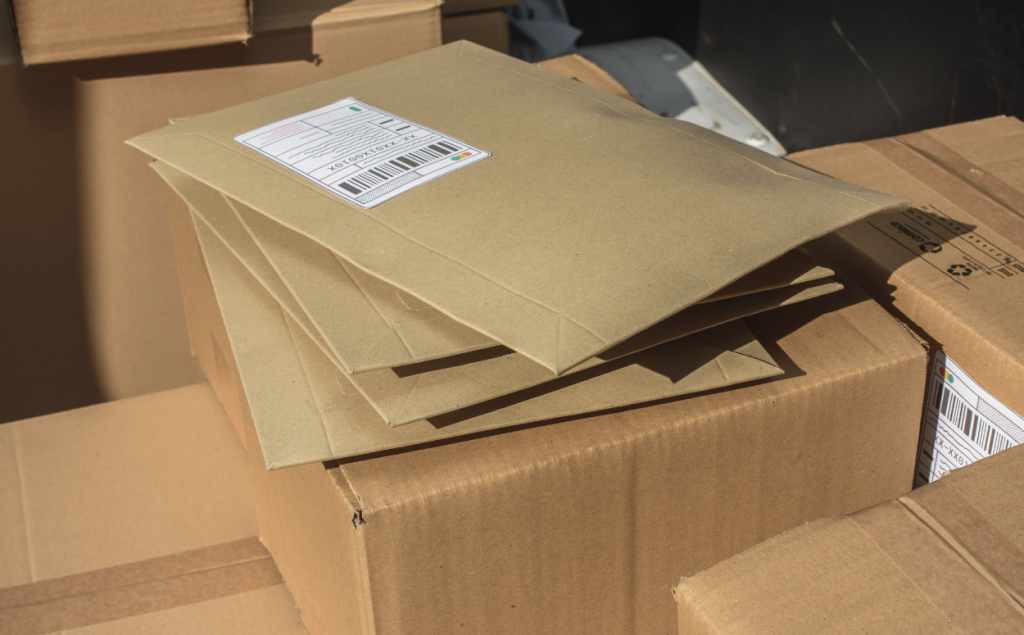Let’s talk about transition fulfillment providers.
Switching third-party logistics (3PL) providers can feel like a daunting task, but for many businesses, it’s a necessary step toward improving efficiency, enhancing customer satisfaction, and reducing costs. Whether you’re facing issues with your current provider or seeking better alignment with your business goals, the transition process doesn’t have to be overwhelming. By following a structured plan, you can ensure a seamless switch and unlock the full potential of your new logistics partnership.
This guide will walk you through each step of the process, helping your company make a successful transition with Ideal Fulfillment, a provider committed to delivering tailored, agile, and cost-effective logistics solutions.
Table of Contents

Step 1: Assess Your Current 3PL Relationship
Identify Pain Points
The first step in the transition process is understanding why you want to switch 3PL providers. Common reasons include high costs, lack of flexibility, poor communication, frequent errors, or failure to meet service level agreements (SLAs). Document these issues to create a clear picture of what’s not working and what improvements you expect from a new partner.
Evaluate Performance Metrics
Take a close look at the key performance indicators (KPIs) that reflect your 3PL provider’sefficiency and impact on your business operations. Critical KPIs include order accuracy, which measures how consistently orders are fulfilled correctly without mistakes, and shipping times, which indicate how quickly orders reach your customers after they are placed. Other important metrics include inventory management efficiency, which tracks how well stock levels are maintained to meet demand without overstocking or understocking, and customer satisfaction, which gauges how well your logistics process supports a positive customer experience.
Analyzing these metrics in depth allows you to identify patterns and trends that may indicate strengths or weaknesses in your current setup. For instance, recurring delays in shipping might highlight bottlenecks in the fulfillment process, while frequent inventory discrepancies could signal a need for better inventory tracking systems. To put these metrics into context, compare them against industry benchmarks and competitors’ standards to pinpoint areas where your 3PL is underperforming. By identifying these gaps, you’ll be better equipped to articulate your needs to a new provider and set clear performance expectations that align with your business goals.
Align with Business Goals
Take the time to evaluate how your current 3PL aligns with your broader business objectives, especially as you consider future growth and expansion. Your 3PL should be a strategic partner that can adapt and evolve alongside your business needs. For example, if your company is experiencing rapid growth, entering new markets, or launching new product lines, it’s essential to assess whether your current provider has the resources, infrastructure, and flexibility to support these changes. A good 3PL partner should be capable of scaling operations efficiently to handle increased order volumes, seasonal demand fluctuations, and geographic expansion without compromising service quality.
If you plan to explore international markets, ensure that your 3PL can facilitate cross-border shipping, handle customs and tariffs, and manage international logistics. Similarly, if you anticipate a shift in your customer base or product offerings, your 3PL should be flexible enough to adjust its services—whether that’s offering custom packaging solutions, adapting to changes in order fulfillment methods, or integrating with new technology platforms that support your evolving sales strategies.
By ensuring your future provider can scale with your business, you create a partnership that not only meets your current needs but also grows alongside your ambitions, enabling your company to thrive in both existing and new markets.
Step 2: Research and Select a New 3PL Provider
Define Your Requirements
Based on the assessment of your current provider, create a list of must-have features and services. These might include:
- Transparent pricing
- Real-time inventory tracking
- Custom packaging or kitting
- Support for international shipping
- Integration with your e-commerce platforms
Evaluate Potential Providers
When researching potential 3PL providers such as Ideal Fulfillment, it’s crucial to dive deep into their capabilities and track record to ensure they align with your company’s needs. Start by looking into how well the provider can address the specific requirements of your business, such as product type, order volume, shipping destinations, and service expectations. Ideal Fulfillment, for example, may specialize in specific industries or offer tailored services that could significantly benefit your operations.
To further evaluate a provider’s suitability, request case studies that demonstrate their success with clients in similar industries or with comparable challenges. These case studies can provide insight into how the 3PL has solved common logistical problems and delivered results. Similarly, ask for client testimonials to gauge the satisfaction of companies that have worked with the provider. Testimonials can reveal how the 3PL manages relationships, handles issues, and meets SLAs in real-world settings.
Additionally, request performance metrics such as on-time delivery rates, order accuracy statistics, and customer service responsiveness. These metrics will give you a quantitative way to assess the provider’s reliability and efficiency. Comparing these figures to industry benchmarks can help you determine if the provider meets or exceeds the standards you’re aiming for.
Incorporating this research into your decision-making process will allow you to choose a provider like Ideal Fulfillment with confidence, knowing they have the proven expertise and capabilities to meet your evolving logistical needs.
Conduct Interviews and Site Visits
Once you’ve identified a shortlist of potential 3PL providers, it’s time to schedule calls or meetings to discuss your specific requirements in greater detail. This is a critical step in the selection process because it allows you to assess how well the provider understands your business needs and whether they can tailor their services accordingly. During these discussions, be clear about your expectations, including service level agreements (SLAs), shipping times, inventory management needs, and any specific challenges you face. Ask questions about their processes, technology, and how they manage customer service, order fulfillment, and returns.
If possible, arrange to visit the provider’s facilities in person. This provides an opportunity to evaluate their operational capacity, technology infrastructure, and overall process efficiency. During the visit, observe their warehousing capabilities, inventory management systems, and order fulfillment processes. Are they using modern technology like automated inventory tracking, real-time reporting, or advanced packing solutions? How well are their facilities organized, and do they have the space and equipment to handle your growing needs?
A site visit will also allow you to assess the provider’s team, seeing firsthand how they manage day-to-day operations and how they handle customer inquiries or problems. This direct interaction can give you valuable insights into their culture and commitment to service quality. The more you understand about their operations, the better equipped you’ll be to determine if they are a good fit for your business.

Review Proposals and Negotiate Terms
Request detailed proposals from your top candidates. Compare their services, costs, and SLAs before making a final decision. Negotiate terms that align with your business priorities, ensuring clarity on fees, responsibilities, and performance expectations.
Step 3: Plan the Transition
Develop a Transition Timeline
Create a realistic timeline for the transition, accounting for inventory transfer, system integration, and staff training. Aim for a phased approach to minimize disruptions to your operations.
Assign a Transition Team
Designate a cross-functional team to oversee the switch. Include representatives from logistics, operations, IT, and customer service to ensure all aspects of the transition are covered.
Communicate with Stakeholders
Inform employees, suppliers, and customers about the upcoming change. Transparency helps build trust and reduces confusion during the transition period.
Step 4: Prepare Your Data and Inventory for The Transition Fulfillment Providers
Audit Inventory
Conduct a comprehensive audit of your inventory to ensure accurate counts and identify slow-moving or obsolete stock. This step helps streamline the transfer process and prevents errors in the new system.
Standardize Data
Prepare clean and standardized data for your new provider, including SKUs, barcodes, product descriptions, and storage requirements. Accurate data is crucial for efficient inventory management and order fulfillment.
Integrate Technology
Work with Ideal Fulfillment’s IT team to integrate their systems with your e-commerce platforms, ERP, or order management software. Test integrations thoroughly to ensure data flows seamlessly between systems.
Step 5: Execute the Transition
Coordinate Inventory Transfer
Collaborate with both your current and new 3PL providers to plan the inventory transfer. Schedule shipments during low-demand periods to minimize the impact on order fulfillment. Monitor the transfer closely to ensure all stock arrives safely and accurately.
Train Your Team
Once you’ve chosen a new 3PL provider and are ready to transition, it’s essential to provide comprehensive training for your staff on the new provider’s systems, processes, and communication protocols. This step is critical for ensuring that your team adapts quickly and that operations continue smoothly during the transition.
Train on Systems and Software
Start by training your team on any new software or technology the new 3PL provider uses. This may include order management systems, inventory tracking software, or communication tools. Ensure your staff understands how to access and input data, track orders, update inventory, and generate reports. If the new system integrates with your existing platforms (such as your e-commerce or ERP system), ensure your team knows how to use it seamlessly.
Familiarize with Processes and Procedures
Next, walk your staff through the new processes and procedures the 3PL will implement. This could include how they handle order picking, packaging, and shipping, as well as how returns or exchanges are processed. Make sure your team understands how these new procedures will affect their roles and responsibilities, and provide any necessary guidance on adjusting to the new workflow.
Emphasize Communication Protocols
Effective communication between your team and the 3PL provider is essential for smooth operations. Train your team on how to communicate with the new provider for things like troubleshooting, order issues, or inventory concerns. Establish clear points of contact, response times, and escalation procedures to ensure problems are addressed quickly and efficiently.
Implement Ongoing Support
Training shouldn’t end with the initial transition. Set up regular follow-up training sessions and feedback loops to address any challenges your team faces as they become more familiar with the new system. Encourage open communication with your 3PL partner, as they can provide additional training or resources if needed.
By providing your team with the necessary tools and knowledge, you’ll ensure a smoother transition to the new 3PL and minimize disruptions to your operations. With a well-trained team, you can maintain operational continuity and continue to deliver exceptional service to your customers.
Implement a Soft Launch
Start with a soft launch to test the new provider’s processes and systems. Use this period to identify and address any issues before fully transitioning operations.
Step 6: Monitor and Optimize
Track Performance
During the initial months, monitor the new provider’s performance against the agreed-upon KPIs. Pay close attention to order accuracy, shipping times, and customer satisfaction to ensure they meet your expectations.
Provide Feedback
Maintain open communication with Ideal Fulfillment, sharing feedback on what’s working and where improvements are needed. A proactive approach fosters a collaborative partnership and continuous improvement.
Adjust Processes
Work with your new 3PL to refine processes as needed. Regularly review workflows and technology integrations to optimize efficiency and address emerging challenges.
Benefits of Partnering with Ideal Fulfillment
- Customized Solutions: Tailored services to meet your unique business needs.
- Advanced Technology: Real-time tracking, seamless integrations, and robust analytics.
- Dedicated Support: A team of logistics experts committed to your success.
- Scalability: Flexible solutions that grow with your business.
- Transparent Pricing: No hidden fees or surprise charges.
Transition Fulfillment Providers
Switching 3PL providers is a significant undertaking, but with careful planning and the right partner, it can transform your logistics operations. By choosing Ideal Fulfillment, you gain a partner dedicated to helping your business thrive through customized, agile, and efficient solutions.
With this step-by-step guide, your company can confidently make the transition and unlock the full potential of a logistics partnership that aligns with your goals.
